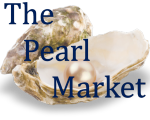How Pearls Are Formed
Author: The Pearl Market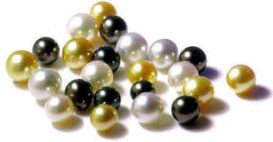 Some believed pearls to be the tears of the gods. Others thought them dewdrops filled with moonlight that fell into the ocean and were swallowed by oysters.
Some believed pearls to be the tears of the gods. Others thought them dewdrops filled with moonlight that fell into the ocean and were swallowed by oysters.A pearl is a natural gem created by a living organism. When a foreign object is introduced into a mussel or oyster the animal coats the irritant with a substance called nacre, the same material with which it makes it's shell. Layers of nacre build up to make a pearl.
Cultured Pearls
Most wild, natural pearl producing oyster beds have vanished due to over-fishing, oil drilling and pollution. Today, the world's most beautiful pearls are cultured.Cultured pearls share the same properties as wild pearls. The difference is that a technician opens the shell and inserts the irritant which stimulates nacre production.
Seawater oysters have a round shell bead (traditionally from an American freshwater mussel) grafted in as the irritant. This is called 'nucleating'. Oysters are suspended in water from rafts and at risk from typhoons, parasites, predators and algae.
Freshwater mussels have a small piece of mantle tissue (nacre producing tissue from another mussel) introduced as the irritant. This tissue dessicates leaving a solid pearl. Mussels are farmed in inland lakes and rivers.
Pearl Myths
Many people think of wild oysters ingesting a grain of sand as the foreign body which stimulates nacre production.Living in the sea, oysters are constantly ingesting and expelling sand and irritants.
Only when something becomes lodged - like a piece of shell, bone, coral or parasite does the oyster start nacre production.
Nacre
Is made of crystals of calcium carbonate aligned with each other so that light passing along the axis of one, is reflected and refracted by the other to produce a rainbow of light and colour.Pearl Colours
Pearls come in a variety of colours. Natural colours are mainly down to to the breed of mollusc. Other influences include diet, water temperature and pollutants.
No-one can predict or control what colour pearls will be produced in any hatchery.
 Black Pearls are rarely jet black but blue, green, silver, grey, aubergine, copper, peacock and more. Green is the predominant colour.
Black Pearls are rarely jet black but blue, green, silver, grey, aubergine, copper, peacock and more. Green is the predominant colour.Naturally coloured black pearls come from the pearl farms of French Polynesia (Tahitian pearls) as well as Indonesia and the Phillipines.
Pearl Shapes
 Pearls come in a bewildering variety of shapes, colours and sizes. Round pearls traditionally command the highest prices but it's worth remembering that wild pearls were rarely round.
Pearls come in a bewildering variety of shapes, colours and sizes. Round pearls traditionally command the highest prices but it's worth remembering that wild pearls were rarely round.Harvesting Pearls
Harvesting pearls is a time consuming business. Of the millions of oysters and mussels seeded each year, only a proportion, (maybe just 50%) will survive to bear pearls. Of these, many will not produce pearls of a marketable quality.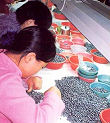 Each pearl must be sorted by size, shape, colour, lustre and blemish.
Each pearl must be sorted by size, shape, colour, lustre and blemish.
Then they need to be drilled and matched for stringing - a skilled and laborious task.
To find 50 perfectly matched high-quality pearls for a 16 inch necklace a pearl processor may have to sort 10,000 pearls.
Now you know why good quality pearl necklaces aren't cheap!
Wild Pearls
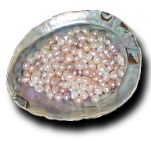
Come in all shapes, colours and sizes. As their name implies, wild or natural pearls are formed without the intervention of man. Overfishing and pollution has eliminated most wild oyster beds but some can still be found in the waters of the Arabian Gulf.
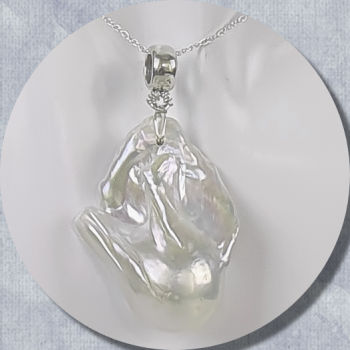 Good quality baroque pearls, the nearest you can get to a wild pearl, have become increasingly fashionable and favoured by celebrities.
Good quality baroque pearls, the nearest you can get to a wild pearl, have become increasingly fashionable and favoured by celebrities.